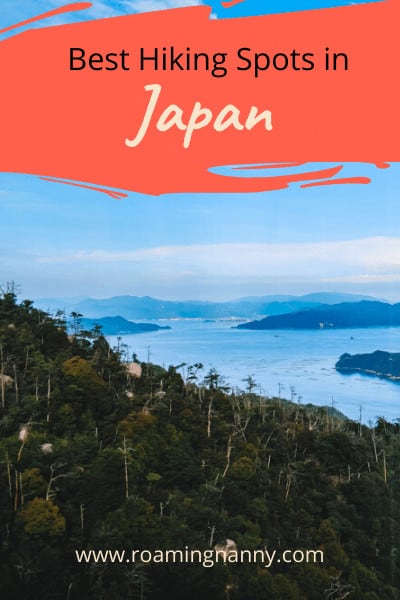Hiking in Japan
Japan is one of the most picturesque countries I’ve ever visited. Hiking in Japan is some of the best in the world. Japan’s natural places are well taken care of. As a result they are in the condition they were thousands of years ago.
With the help of a few female travel bloggers I’ve put together a list of some of the best hiking spots in Japan.
Top Hiking Spots in Japan: Mount Misen, Miyajima Island
submitted by Greta Omoboni of Greta’s Travels
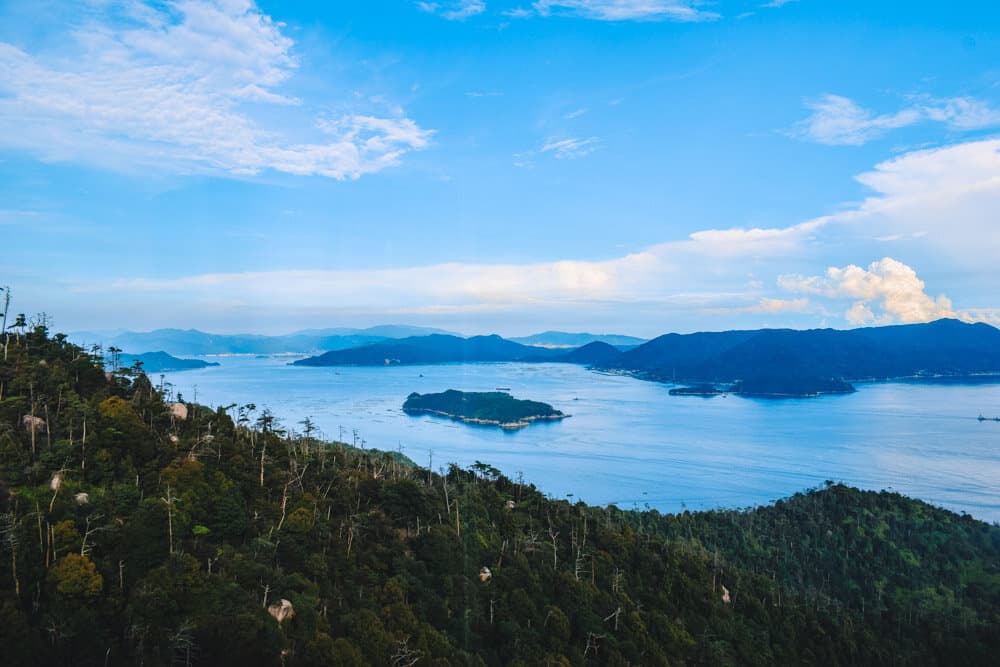
If you’re looking for a beautiful and rewarding hike in Japan, Mount Misen on Miyajima Island is the perfect choice. Just off the coast of Hiroshima, Miyajima Island is off the standard tourist route, but is definitely worth a visit.
There are a number of different trails that get to the peak of Mount Misen. There is also a cable car. It will take you around 1.5 – 2 hours on any of the trails. The cable car goes all the way to the viewing platform. However, there is still an additional 30 minutes of hiking to reach the proper peak.
If you want to get some walking in, but don’t feel like doing a full hike, you can always take the cable car up and hike the rest of the way to the peak. On the hike back down you will catch some beautiful glimpses of the Miyajima harbor. You’ll also be able to see the famous Itsukushima Shrine or floating torii gate.
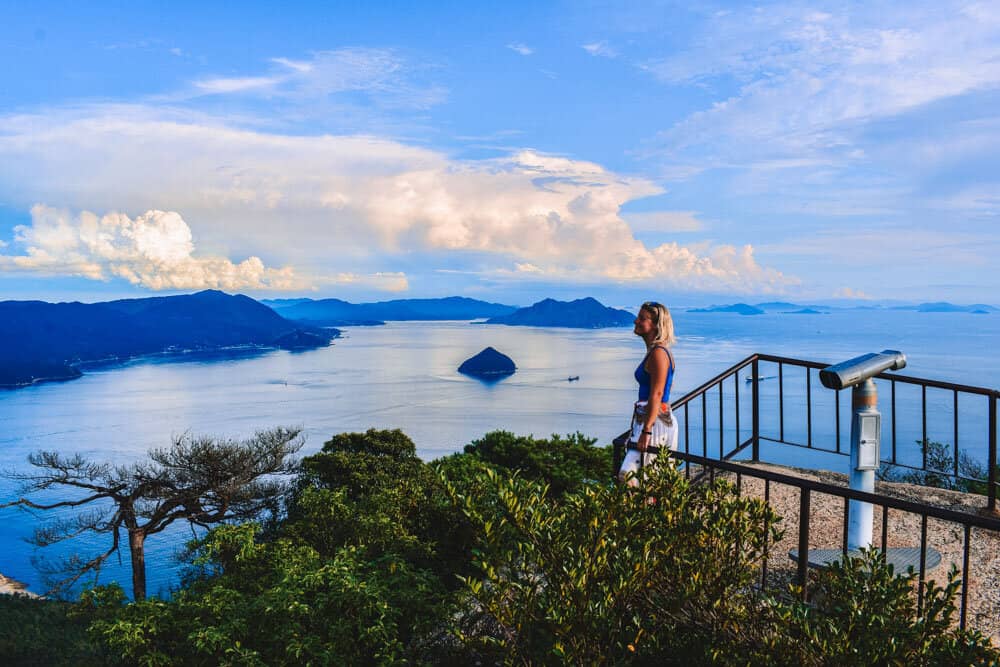
Once you reach the top of Mount Misen you will find stunning 360 views over the surrounding islands and Japanese mainland. There are also a number of temples and shrines surrounding the summit.
After our hike of Mount Misen we spent the night at Miyajima Hotel Ma
Pin it for Later!
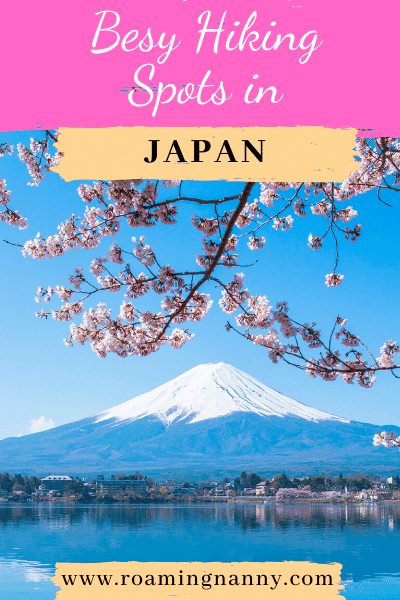
Hiking in Japan: Mount Fuji
Mount Fuji is one of the most popular mountains for hiking in Japan. While it only takes 2 days to hike to the summit and back it isn’t a hike that should not be underestimated.
I would recommend hiring a guide to take care of all the details and ensure your safety. If you’ve never been to altitude you might experience altitude sickness. It can ruin your experience and having a helping hand if it happens can really help.
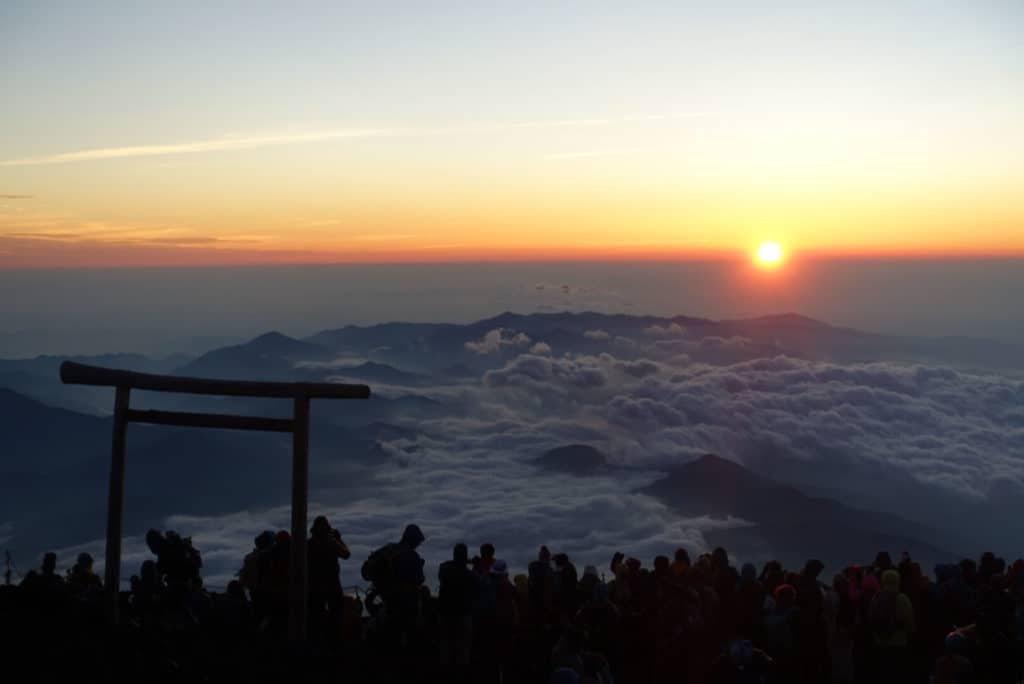
When hiring a guide you’ll get picked up at a central meeting point in Tokyo and they’ll drive you to Mount Fuji to begin your hike at a lower station.
The hike itself is slow and steady up the rocky trail. Make sure you bring layers and plenty of sunscreen as much of the trail is exposed. Along the way, you’ll be able to stop a various stations to rest and get snacks. The higher you go the more expensive the snacks will cost.
Read More: Everything you need to know about Climbing Mount Fuji
The summit is often crowded and depending on the weather you may or may not get a view. On my summit we were lucky and had a great view but couldn’t stay at the top very long because the wind was so powerful.
Kamikochi National Park
submitted by Sarah Carter from a social nomad
Kamikochi National Park is easily reachable from Matsumoto as a day trip, there is a specific train and bus combination ticket that you can buy (not covered on the JR Pass, but still good value). For longer hiking trips to Kamikochi, there are several ryokans and hotels in the National Park. There are no entrance fees to the National Park, so if you have longer then a day its an excellent place to spend a few days.
Kamikochi is a great place for hikers of all abilities, as it’s possible to connect several trails to extend your hiking time. The train/bus combination trip from Matsumoto drops you in the central valley at the visitor center. Visitor center staff can help you to decide where to hike depending on your experience and how long you want to spend hiking. They’ll also provide free maps to you and point out the facilities of the park.
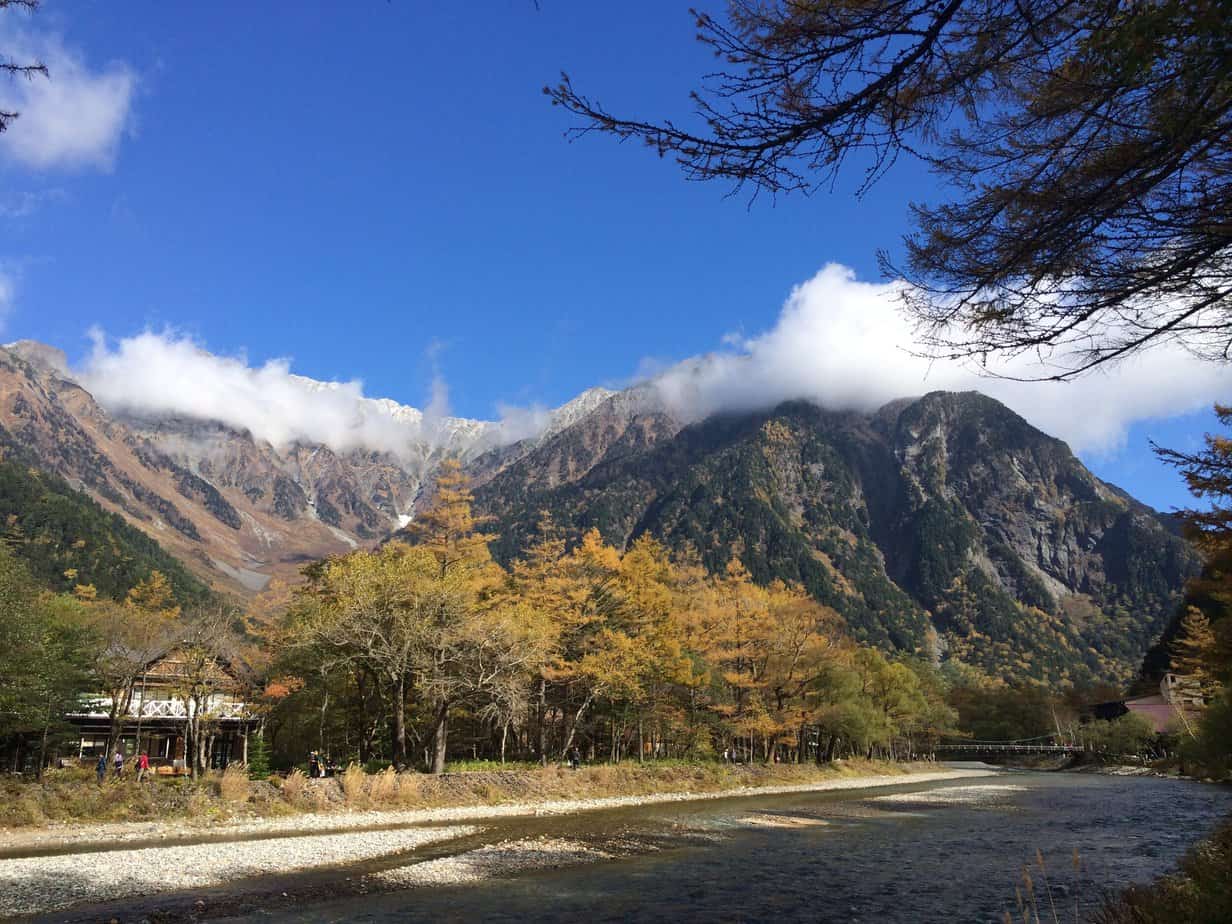
The hiking trails in Kamikochi are clearly marked and they’re well made. You’ll find small shelters and cafes where you can take food and drink breaks and the park also provides picnic shelters. You must, however, take all your garbage back out of the park with you.
Read More: Things to know before going to Japan
While many of the trails are relatively short here – some around 2 kilometers, the trail map makes it easy to connect several for longer hikes. There’s a river that runs through the center of the main valley of the park and is crossed by photogenic bridges at points. If you opt for a longer day of hiking, you’ll find yourself zigzagging across the river during your hike.
The hiking in Kamikochi is scenic and very friendly. It is easy to reach and our only regret was that we didn’t stay longer!
Hiking in Japan: Yamanobe no michi
Submitted by Josy Austin of A Walk and A Lark
If you are staying in the Kansai area, and fancy stretching your legs, consider walking along the Yamanobe trail. This was the first road mentioned in Japanese historic records as it was originally part of the Shinkaido trail all the way from Hasedera (an amazing temple) to Edo (modern day Tokyo). You’ll be walking through countryside steeped in Japanese history.
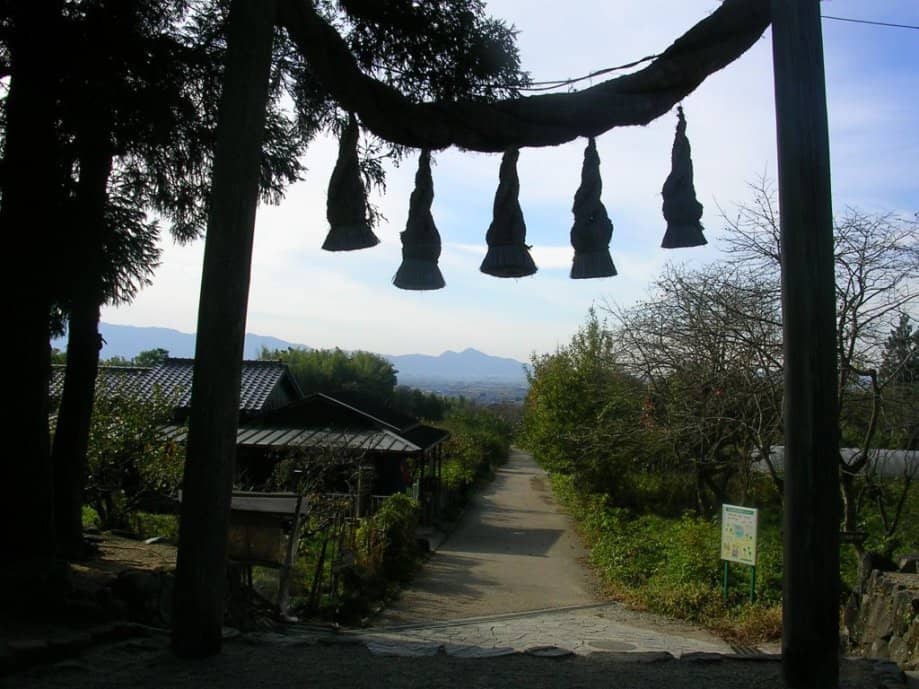
If you hike the whole way from Sakurai to Tenri, it is 16-17km, and will take 5-6 hours. However there are several train stations nearby along the route. If you fancy a shorter version of the walk, just turn and head back towards the train line. You can pick up a map at the Tourist Information Center in Sakurai. There are plenty of sign-posts, so you won’t get lost.
The pathway hugs the mountains and goes past countless cultural sights. You’ll walk past a traditional torii gate, through a bamboo grove, along mikan orchards and past tombs from ancient emperors. My favorite two shrines along the route are Omiwa Jingu Shrine, (located near Sakurai under beautiful old growth trees) and Isonokami Jingu Shrine, (near Tenri). Where for some reason, there are loads of cocks and chickens roaming around.
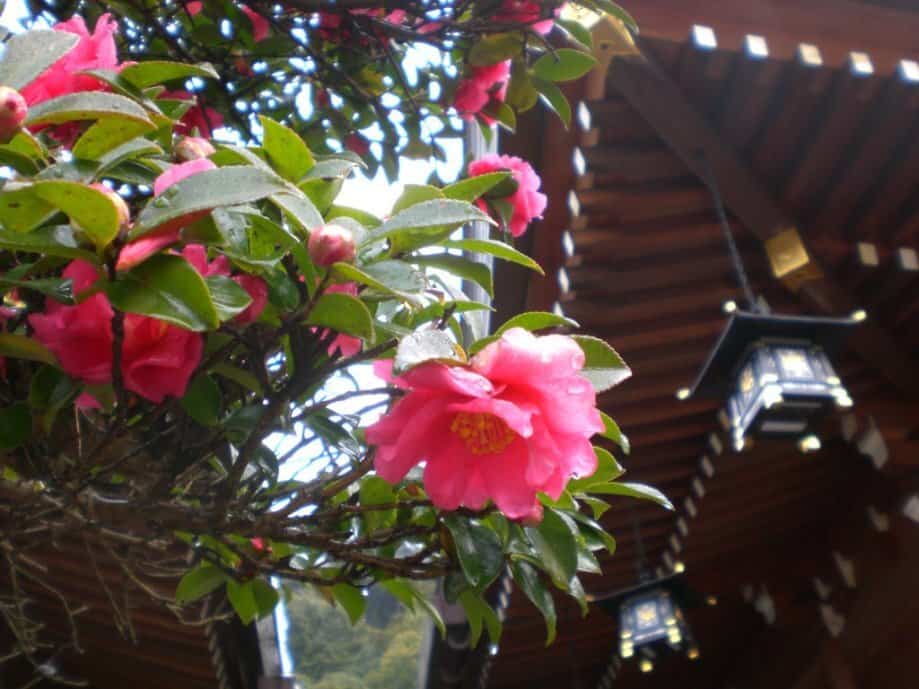
Remember to bring a little cash; This trail goes past farms with honesty boxes, so you’ll be able to buy some fruit. I’ve tasted kaki (Japanese persimmons), mikan (like tangerines) and strawberries along this trail. The produce changes depending on the time of year.
Once you’ve finished walking, you can take a quick train ride back to Nara City.
Best Hikes in Japan: Kumano Kodo Pilgrimage
This ancient pilgrimage has had trekkers traveling its paths since the 10th century. The isolated Kii Peninsula embodies the religous origins of Japan.
In 2004 The Kumano Kodo Pilgrimage was registered as a UNESCO World Heritage Pilgrimage, joining the Camino de Santiago in Spain.
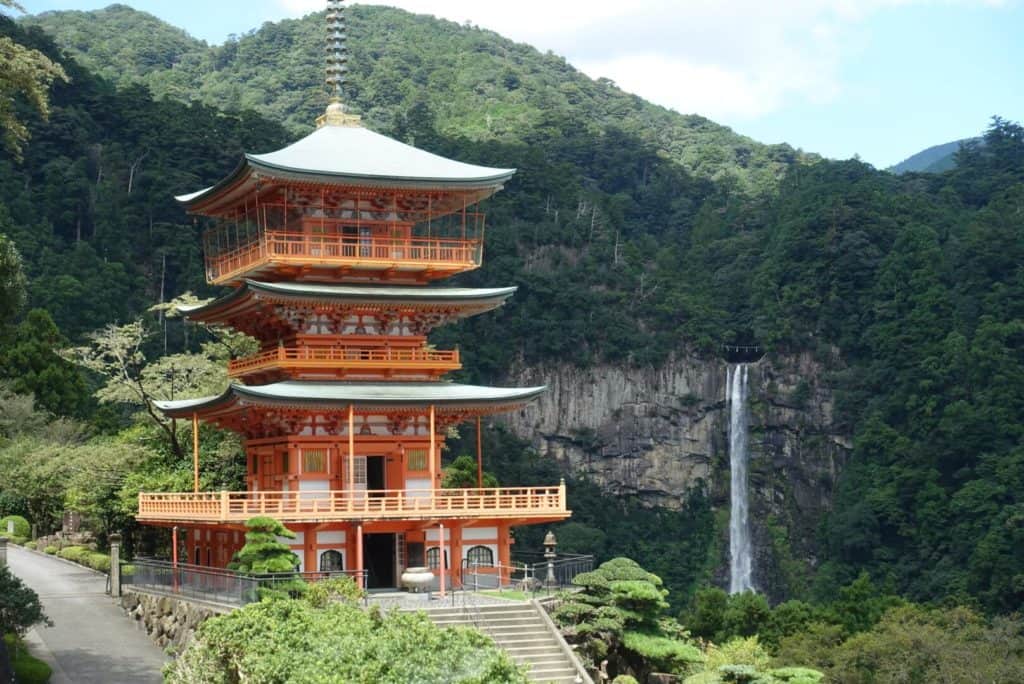
Stretching over 38 kilometers the Imperial Nakahechi Route makes stops at the 3 grand shrines and should not be missed. These worship sites make this experience hiking in Japan so unique.
If you’re hiking the Kumano Kodo you’ll have to pack light as moving from place to place requires only the essentials. Read my Kumano Kodo Pilgrimage Packing List to help you get organized.


